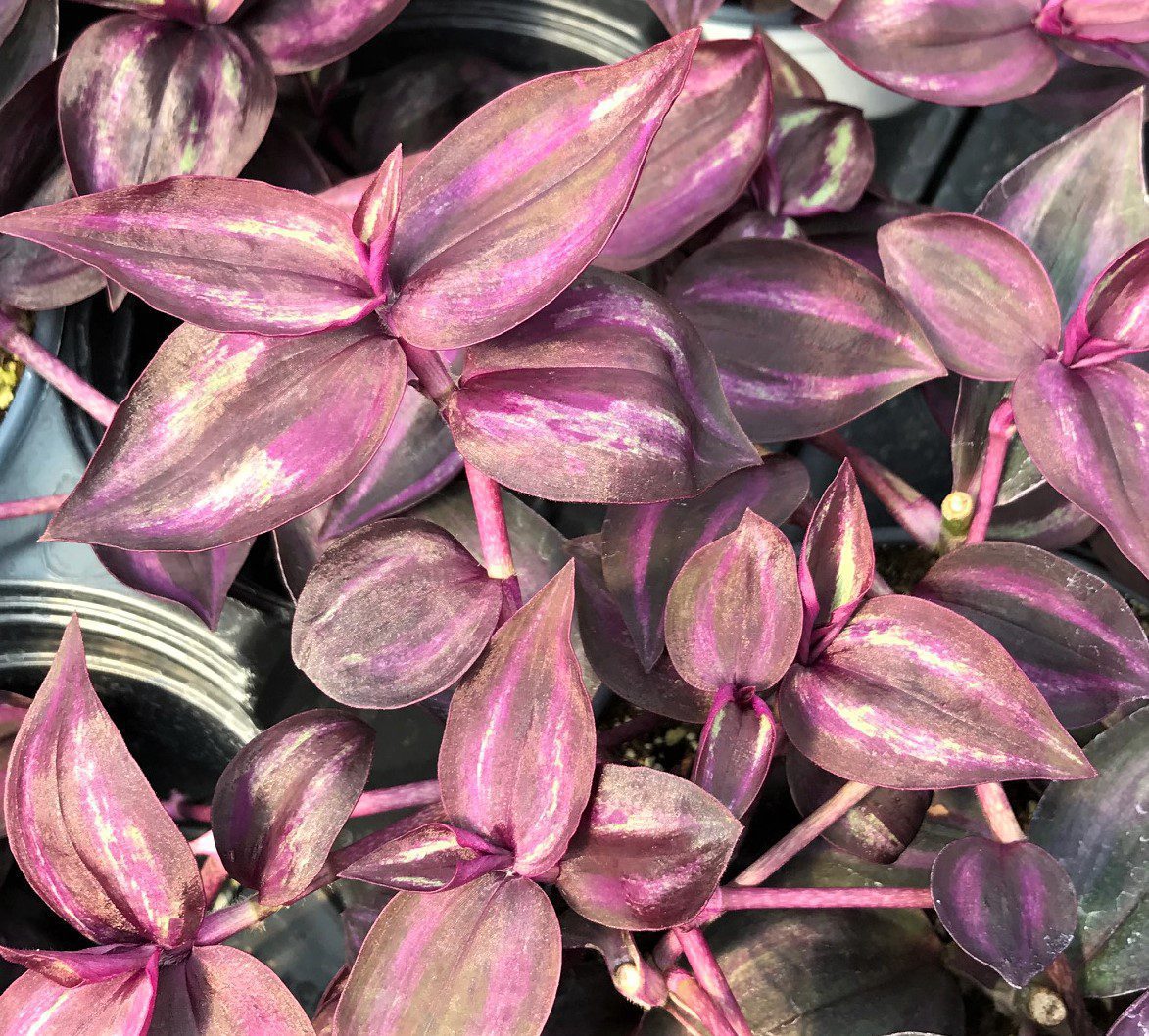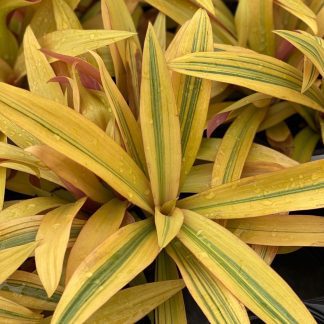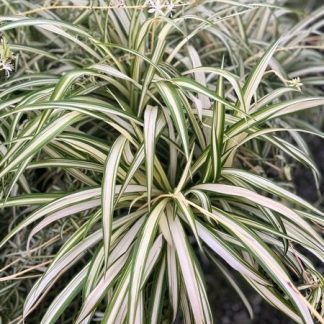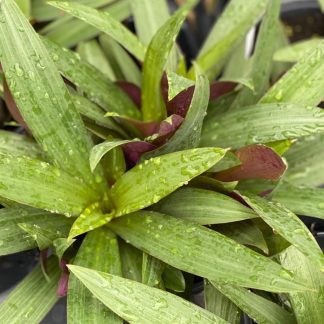Description
Tradescantia zebrina ‘Wandering Jew Red’: The Vibrant Trailing Beauty for Home and Garden
There is something magical about a plant that looks alive with color even when it is not in bloom. Tradescantia zebrina ‘Wandering Jew Red’ does exactly that. Its bold stripes of red, purple, and silver catch the light and bring instant energy to any space. This fast-growing trailing plant is both dramatic and surprisingly easy to care for, making it perfect for gardeners at any skill level.
In this deep guide, we will explore everything about this plant—its origins, how to grow it, ways to style it indoors and outdoors, care routines, propagation tips, and why it continues to be a beloved choice for plant lovers around the world.
A Quick Look at Wandering Jew Red
Before diving deeper, let’s paint a clear picture of what makes this plant so special.
-
Botanical Name: Tradescantia zebrina ‘Wandering Jew Red’
-
Common Names: Wandering Jew, Inch Plant, Spiderwort
-
Family: Commelinaceae
-
Native Range: Mexico and Central America
-
Growth Habit: Trailing, spreading stems with vibrant foliage
-
Foliage Colors: Deep red and purple tones with metallic silver striping
-
Uses: Indoor houseplant, outdoor ground cover, hanging baskets, mixed planters
-
Care Level: Easy, low-maintenance
This combination of beauty and simplicity explains why it has remained a popular choice for decades.
The Origins and Natural Habitat
Tradescantia zebrina is native to Mexico, Guatemala, and Belize, where it thrives in tropical forests. In the wild, it grows as a creeping ground cover, spreading rapidly across shaded areas with warm, humid conditions.
Its ability to adapt to different light levels and soil types allowed it to naturalize in many parts of the world. Today, you can find it thriving in gardens, balconies, and homes from Florida to Southeast Asia.
The ‘Red’ variety is especially striking, with richer burgundy tones compared to the classic green-and-purple zebrina. This makes it highly desirable for gardeners looking to add warm, jewel-like colors to their plant displays.
Why Choose Wandering Jew Red?
There are endless plants to choose from, so why does this one stand out?
-
Vivid Foliage: Few houseplants can match its mix of metallic silver stripes and deep red tones.
-
Fast Growth: Perfect for filling empty spaces quickly, whether in a hanging basket or as a ground cover.
-
Easy Propagation: Snip a stem, place it in water or soil, and you’ll have a new plant in weeks.
-
Low Maintenance: Thrives with minimal watering and tolerates occasional neglect.
-
Versatile Placement: Works equally well indoors or outside in frost-free climates.
This combination makes it a go-to plant for beginners and seasoned collectors alike.
Growing Conditions
Understanding its preferred conditions will help you grow a plant that thrives year-round.
Light
-
Prefers bright, indirect light.
-
Can tolerate some direct morning sun but avoid harsh afternoon rays to prevent leaf burn.
-
In lower light, the plant will survive but the vibrant red and silver tones may fade.
Temperature
-
Thrives in 60–80°F (16–27°C).
-
Can handle short drops to 50°F (10°C) but is not frost-hardy.
-
Bring indoors before the first frost in colder regions.
Humidity
-
Prefers moderate to high humidity but tolerates average household levels.
-
In very dry air, occasional misting or using a humidity tray helps prevent crispy leaf edges.
Soil
-
Needs a well-draining potting mix.
-
A blend of standard potting soil with perlite or coarse sand works perfectly.
-
Avoid heavy soils that retain too much moisture and cause root rot.
Watering Routine
This plant loves consistent moisture but hates soggy roots.
-
Water when the top inch of soil feels dry.
-
Reduce watering during cooler months when growth slows.
-
Always ensure the pot has drainage holes to prevent standing water.
A good rule: slightly moist but never waterlogged.
Fertilizing for Vibrant Growth
Feed monthly during spring and summer with a balanced, water-soluble fertilizer diluted to half strength. This boosts leaf color and encourages trailing growth. Reduce feeding in fall and winter when the plant naturally slows down.
Pruning and Maintenance
Tradescantia zebrina grows fast, so occasional pruning keeps it looking lush rather than leggy.
-
Pinch back stems regularly to encourage branching.
-
Trim any faded or damaged leaves.
-
Use cuttings to propagate and refresh older plants.
This cycle of pruning and replanting keeps the plant vibrant for years.
Propagation: Multiply Your Plant with Ease
One of the joys of this plant is how simple it is to share with friends or expand your own collection.
Water Propagation
-
Cut a healthy 4–6 inch stem just below a node.
-
Remove lower leaves so only the top few remain.
-
Place the cutting in a jar of water.
-
Roots appear within 1–2 weeks.
-
Transfer to soil once roots are an inch long.
Soil Propagation
-
Plant cuttings directly into moist, well-draining soil.
-
Keep lightly watered until roots establish.
-
New growth will appear within a few weeks.
Both methods are fast and highly successful.
Styling Indoors
Tradescantia zebrina ‘Wandering Jew Red’ shines indoors thanks to its trailing vines and jewel-like colors. Here are creative ways to showcase it:
-
Hanging Baskets: Let the vines cascade for a living curtain of color.
-
Bookshelf Accent: Place on a high shelf where stems can drape down dramatically.
-
Tabletop Planter: Combine with green foliage plants for a rich contrast.
-
Windowsill Display: A bright east-facing window highlights the leaf striping beautifully.
Its tropical vibe pairs well with bohemian décor, modern plant walls, and cozy cottage-style interiors alike.
Outdoor Uses
In warm climates (USDA zones 9–12), this plant doubles as a ground cover or border accent.
-
Ideal for shaded patios, under trees, or along garden paths.
-
Works beautifully in mixed container gardens with coleus, begonias, or caladiums.
-
Can be trained to spill over retaining walls or rock gardens for added drama.
In cooler zones, treat it as an annual or overwinter indoors.
Common Problems and Fixes
Even hardy plants face challenges. Here’s what to watch for:
-
Leggy Growth: Caused by low light—move to brighter conditions and pinch tips.
-
Leaf Fade: Usually from insufficient light or nutrients—adjust care routine.
-
Root Rot: Result of overwatering—let soil dry slightly and ensure good drainage.
-
Pests: Spider mites and aphids can appear—wipe leaves and treat with insecticidal soap.
Most issues are easy to correct with quick adjustments.
Pairing with Other Plants
Create a dynamic display by pairing Wandering Jew Red with contrasting textures and colors:
-
Green Ferns: Soft fronds highlight its bold stripes.
-
Silver Pothos or Philodendron: Complementary metallic tones.
-
Golden Oregano or Variegated Ivy: Adds warmth and contrast.
In mixed planters, it anchors the arrangement with deep jewel tones.
Cultural and Symbolic Notes
Beyond its beauty, Tradescantia zebrina has a history of folk use and symbolism. In some cultures, it represents resilience and adaptability, thriving even when neglected. Its trailing vines also symbolize connection and continuity, making it a thoughtful gift plant for friends and family.
Seasonal Care
-
Spring/Summer: Active growth—water regularly, fertilize monthly, prune for fullness.
-
Fall/Winter: Slower growth—reduce watering and feeding, move away from drafts.
-
Overwintering: In cold zones, bring containers indoors before frost and provide bright light.
Why It Belongs in Every Collection
Few plants combine low maintenance, vibrant color, and versatile styling as effortlessly as Wandering Jew Red. Whether you’re starting your first houseplant or curating a tropical oasis, this plant adapts to your style and space. It grows fast, shares easily through cuttings, and rewards even minimal care with lush color.
Embrace the Living Color
Tradescantia zebrina ‘Wandering Jew Red’ is more than just a plant. It’s a living piece of art, a mood-lifter, and a constant reminder of nature’s creativity. From its shimmering stripes to its cascading vines, every glance feels like a little gift. Bring one into your space, and you’ll see why gardeners everywhere treasure this tropical gem.




